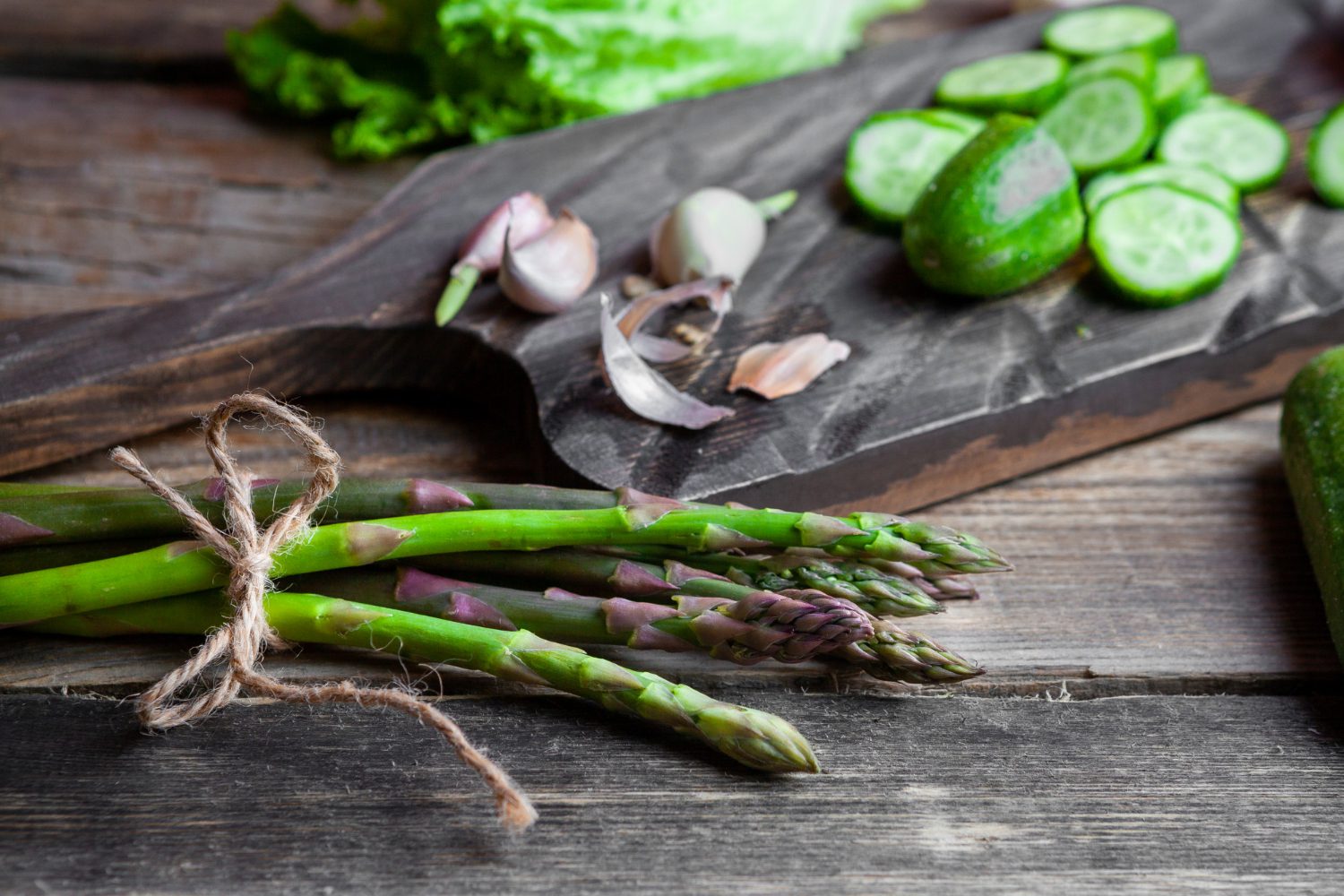As the first warm days of spring awaken the fields, one of the season’s most beloved vegetables takes center stage — asparagus. Known for its elegant shape, refined flavor, and rich nutritional value, asparagus has long been considered a delicacy among gourmets. In recent years, its popularity has soared, with more people recognizing its versatility and health benefits. This vibrant green spear isn’t just a side dish — it’s a symbol of the freshness and vitality that spring brings to the table.
Asparagus season is relatively short, lasting only about six weeks, so making the most of this fleeting ingredient is essential. From choosing the best spears at the market to storing them correctly and preparing mouthwatering dishes, this guide will help you enjoy asparagus at its finest.
The short but precious asparagus season
Asparagus begins to sprout in early spring and continues to delight food lovers until around midsummer. Although imported varieties are available year-round, nothing compares to the flavor and freshness of locally grown asparagus. The vegetable is typically harvested daily, as the spears grow quickly — sometimes up to several centimeters overnight. However, once the days become longer and hotter, the plant starts to toughen, losing its delicate sweetness and tenderness.
Experts emphasize that the best asparagus has a short, firm stalk and a tightly closed tip. Avoid spears that look dry, limp, or have opened buds — these are signs the asparagus is no longer fresh. Interestingly, thicker spears are not necessarily better; in fact, younger, thinner ones tend to be more flavorful and tender.
Storing asparagus to preserve freshness
Because asparagus begins to lose quality shortly after harvest, storing it properly is key. Ideally, you should cook and enjoy it on the same day you buy it. However, if you need to keep it for a few days, there are simple tricks to maintain its freshness.
The best method is to treat asparagus as you would fresh flowers. Trim the ends of the stalks and stand them upright in a glass or jar with a little water — about 2 to 3 centimeters. Then cover the tops loosely with a plastic bag or food wrap and place them in the refrigerator. This method helps retain moisture and keeps the spears crisp. Alternatively, you can wrap the ends in a damp paper towel and store the bundle in a closed container or plastic bag in the fridge.
Avoid leaving asparagus uncovered or dry in the fridge, as this will quickly lead to limp, woody stems. With these simple techniques, you can enjoy fresh asparagus for up to four days without losing its flavor or nutrients.
Cooking asparagus the right way
Cooking asparagus may seem intimidating, but it’s one of the easiest vegetables to prepare once you know a few simple rules. The golden principle is not to overcook it. Overdone asparagus becomes mushy, dull in color, and loses its delicate flavor. Whether boiling, roasting, grilling, or sautéing, aim to keep a slight crunch — that’s when asparagus shines brightest.
Before cooking, wash the spears under cool water and trim off the tough, woody ends. You can test where to cut by gently bending the spear — it naturally snaps where the tender part begins. For boiling, place the asparagus in salted boiling water for 2 to 4 minutes, depending on thickness, then immediately plunge it into ice water to preserve the bright green color.
If you prefer roasting or sautéing, drizzle the spears with olive oil, season with salt and pepper, and cook for 6–8 minutes, turning occasionally. A dash of lemon juice or a sprinkle of Parmesan can elevate the flavor without overshadowing the vegetable’s natural sweetness.
Practical tips and expert advice
According to Dr. Anna Müller, a nutritionist at the European Institute of Food Science, “Asparagus retains its nutrients best when cooked briefly and kept bright green. Overcooking leads to vitamin loss and diminishes flavor.” Similarly, Chef Michael Stanton, an American culinary lecturer, suggests standing the spears upright in water before storage to keep them crisp for multiple days. Practical tips include:
- Trim woody ends before storage and cooking
- Use minimal water when boiling to preserve vitamins
- Cook briefly to maintain tenderness and color
- Pair with citrus, olive oil, or Parmesan to enhance flavor
- Serve immediately after cooking for best texture
Delicious recipes to try this season
The beauty of asparagus lies in its versatility. It can be enjoyed on its own or paired with a variety of ingredients — from eggs and fish to pasta and grains. Here are two quick and irresistible recipes that highlight asparagus’s unique taste.
Creamy asparagus soup with ginger
For a light yet flavorful soup, heat olive oil in a pan and sauté chopped shallots and grated fresh ginger. Add diced potatoes and cook briefly, then pour in vegetable broth and simmer until the potatoes soften. Add chopped asparagus and cook for another 6–8 minutes. Blend the mixture with a handful of spinach and herbs like parsley or cilantro until smooth. Season with salt, pepper, and a squeeze of lemon. The result is a silky, aromatic soup that’s equally delicious hot or cold.
Citrus risotto with asparagus
In a large pan, heat olive oil and sauté finely chopped onion until soft. Add Arborio rice and cook for a few minutes until the grains become translucent. Pour in white wine (optional) and cook until evaporated. Gradually add warm vegetable broth, one ladle at a time, stirring constantly. When the rice is almost done, add chopped asparagus and green peas. Finish with lemon zest, juice, and freshly grated Parmesan cheese. This dish combines creamy texture with a refreshing citrus aroma, making it perfect for spring dining.
Nutritional benefits worth knowing
Beyond its delicious taste, asparagus is a powerhouse of nutrients. It’s rich in vitamins A, C, E, K, and folate, as well as minerals like potassium, iron, and phosphorus. These nutrients support immunity, bone health, and cell regeneration. Additionally, asparagus is high in fiber and antioxidants, which aid digestion and help detoxify the body.
Its natural diuretic properties make it especially beneficial during spring, helping to flush out excess fluids and support kidney health. With so many advantages, it’s no wonder that asparagus is often called the “queen of vegetables” during springtime.
Common mistakes to avoid
While asparagus is simple to prepare, a few mistakes can compromise its flavor and texture.
- Don’t store it dry or uncovered — moisture is crucial to keep it fresh.
- Avoid overcooking — the color should remain vibrant green.
- Don’t peel the stalks unless they are very thick; peeling removes valuable nutrients and texture.
- Never buy asparagus with open tips or dry ends — these are signs of age.
- Don’t overpower the flavor with heavy sauces; asparagus tastes best when kept simple.
By avoiding these pitfalls, you’ll ensure every dish showcases the natural charm of this elegant vegetable.
Bringing spring to your table
Asparagus is more than just a seasonal treat — it’s a celebration of renewal, flavor, and health. Whether you prefer it in a creamy soup, a fresh salad, or a comforting risotto, there’s no wrong way to enjoy it. By choosing quality spears, storing them properly, and cooking them with care, you’ll capture the true essence of spring on your plate.
In summary, asparagus offers a perfect balance of taste and nutrition. It’s easy to prepare, wonderfully versatile, and packed with benefits that support a healthy lifestyle. As its short season comes around each year, take the opportunity to savor its freshness and share this green gem with family and friends. After all, few things embody the joy of spring quite like the first bite of tender, freshly cooked asparagus.







